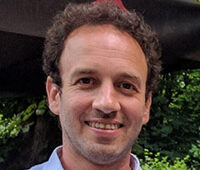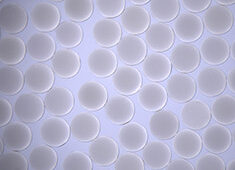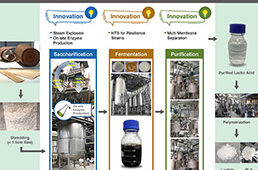 Physicists at Queen Mary University of London have set up a new pitch drop experiment for students to explore the difference between solid and liquids.
Physicists at Queen Mary University of London have set up a new pitch drop experiment for students to explore the difference between solid and liquids.
Known as the “world’s longest experiment”, the set up at the University of Queensland in Australia was famous for taking ten years for a drop of pitch—a thick, black, sticky material—to fall from a funnel.
Publishing in the journal Physics Education, the design of QMUL’s trial is different to both well-known pitch drop experiments, which are running at the University of Queensland and Trinity College Dublin. The new test uses different bitumen (the pitch), which is 30 times less viscous than the Queensland experiment, so that the flow can be seen quicker.
The team have installed not one but five different glass tubes with varying diameters to give five speeds of flow, and set up web cameras to catch the drop in action.
“We’re using the pitch drop experiment to inspire our students and make them question the fundamental nature between solids and liquids,” said Kostya Trachenko, lead author and Reader at QMUL’s School of Physics and Astronomy.
“Because our experimental set-up is unique, we have proof that apparent solids like bitumen can flow over long time scales—in this case, one academic year.”
Undergraduate students Amy Widdicombe and Prathisan Ravindrarajah measured the flow of bitumen during a summer project.
Dr Trachenko added: “The experiment highlights and contrasts the conflict between human experience and intuition on one hand and physical reality on the other: the conflict exists in several notable areas of physics. The experiment goes to the heart of modern physics and is awe-inspiring in terms of potential timescales. For example, our calculations demonstrate that familiar silica glass would take much longer than the age of the universe to flow.”
Source: Queen Mary, University of London




